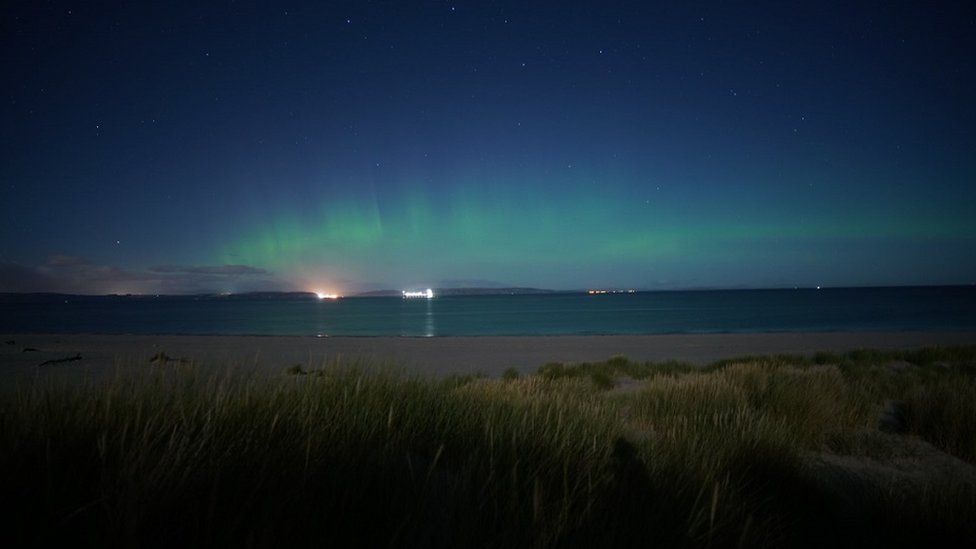Aurora and rare moonbows light up the night
- Published

Jamie Fraser photographed the Aurora Borealis from Nairn
The Aurora Borealis could be seen in the skies from parts of Scotland overnight.
Also known as the Northern Lights, the displays are linked to activity on the surface of the Sun.
The aurora is caused by the interaction of solar wind - a stream of charged particles escaping the Sun - and Earth's magnetic field and atmosphere.
When weather conditions are favourable, Scotland, northern England and Northern Ireland offer some of the best places to observe the aurora, or Northern Lights as the phenomenon is often known.
Image source, Andy Walker
Andy Walker's image of a moonbow at Durness in Sutherland
Image source, Andy Walker
Moonbows, also known as lunar rainbows, are a rare sight. This picture was also taken by Andy Walker at Durness
Moonbows were also spotted overnight.
Also known as a lunar rainbow, the rare optical phenomenon is caused when the light from the moon is refracted through water droplets in the air.
Image source, Andrew Allan
Andrew Allan's image of the aurora at Blairgowrie in Perthshire
Image source, Gordon Mackie
Gordon Mackie's picture of the aurora over Thurso Bay in Caithness
Image source, Ruth Adams
Ruth Adams saw the Northern Lights from Lairg in Sutherland
Image source, Simmer Dim/BBC Weather Watchers
BBC Weather Watchers also captured displays of the aurora, including this shot taken from Mavis Grind, Shetland
Image source, Mercuryblue/BBC Weather Watchers
BBC Weather Watcher Mercuryblue's picture of the Northern Lights from Portknockie in Moray